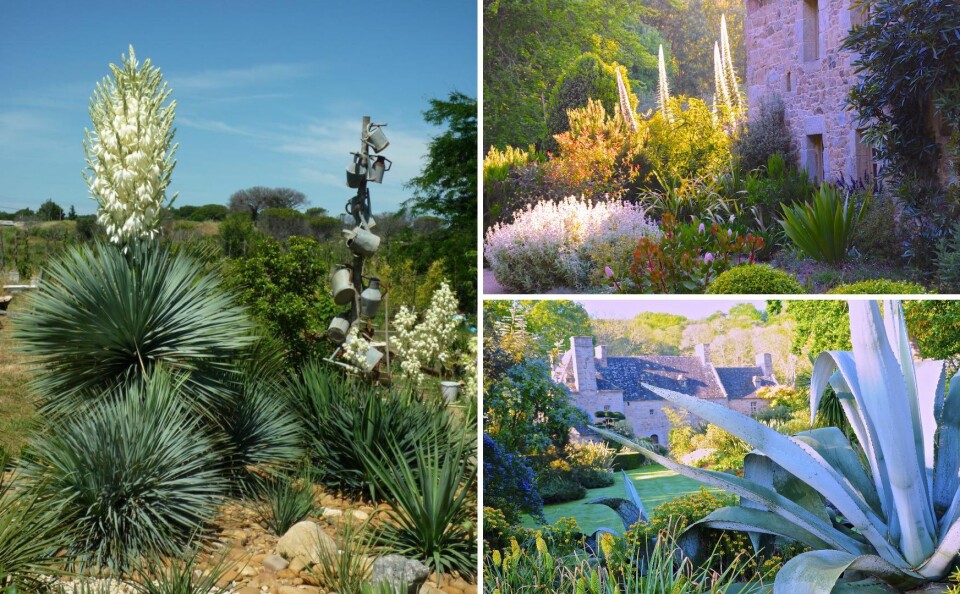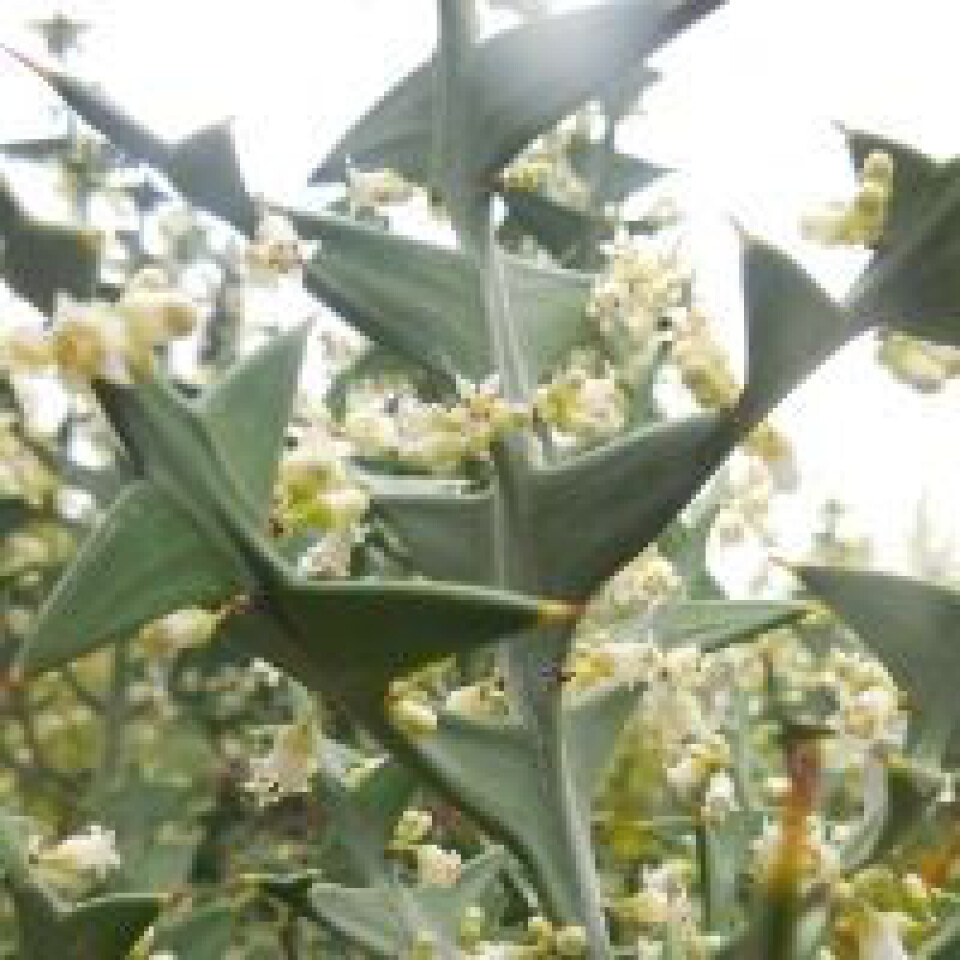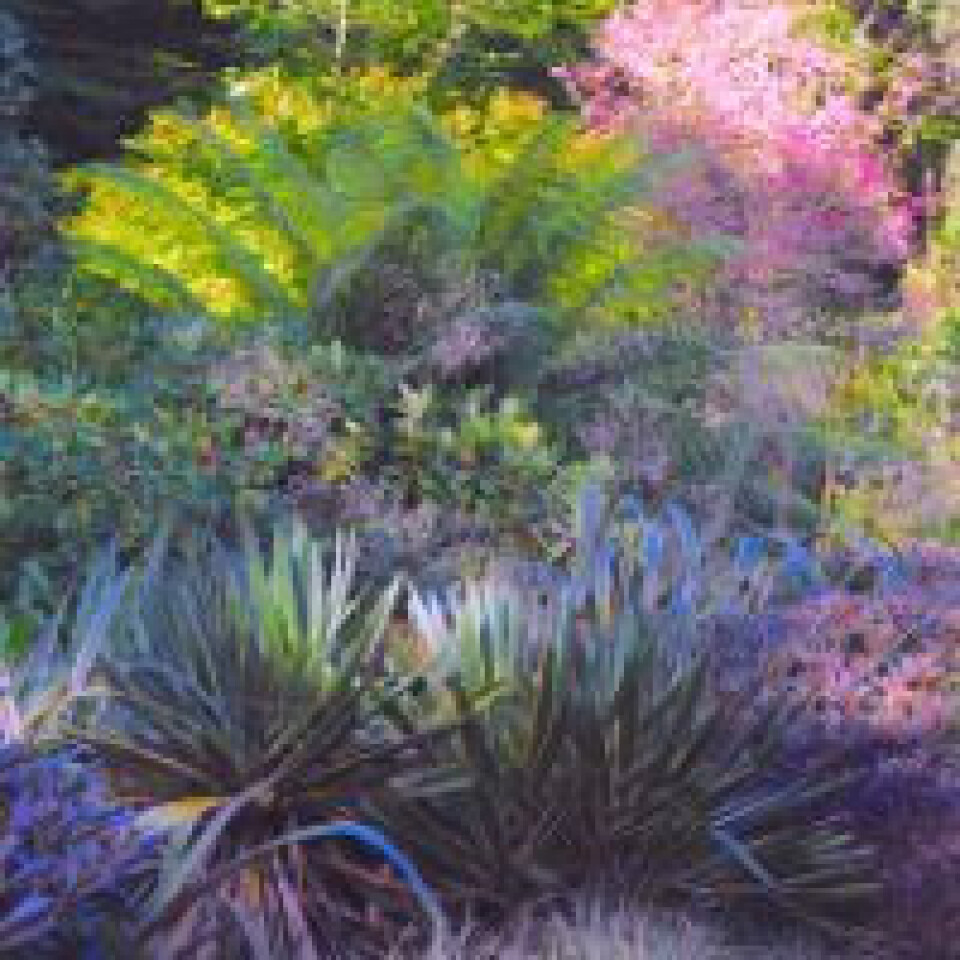-
Farmer blockades to continue on motorways over Christmas in south-west France
Protests are being maintained on the A64, A83 and A63 and on departmental roads
-
The origins and meaning of tirer les marrons du feu
As Christmas approaches, we look at a phrase to describe someone who takes advantage of a situation
-
Road blockades by farmers continue on Monday despite call for Christmas truce
A meeting between local union leaders and officials in Toulouse will determine pre-Christmas blockades
Private gardens created with passion to visit in Brittany and Provence
Two hosts who are ‘mad’ about rare plants and design welcome visitors to their gardens in August for the Jardins Ouverts charity

We are in two very different corners of France for the gardens featured this month (August), moving from the tempestuous summer heat of Provence to the windy shores of Brittany.
But both gardens were created by men similarly under the spell of a lifelong passion for plants.
Gérard Jean, the creator of the Jardin de Pellinec in Brittany, goes as far as to define their common passion as a kind of madness!
Henry Nardy’s garden, in Occitanie (16 Chemin du Creux de la Campagne, Lunel, Hérault) is open under the Jardins Ouverts scheme, by appointment (06 75 22 34 67) and for the European Heritage Days (Journées patrimoine) on the weekend of 17th/18th September.
Growing rare plants in Hérault
‘Le Jardin de l’Henry’ has been developed over 25 years on just over three-quarters of an acre of what Henry describes as a ‘good soil in the garrigue’.
Retiring at the age of 60, he refused to let go of his lifelong dedication, as a professional horticulturist; acquiring, cultivating and propagating some of the rarest plants he could find, and so his garden, which he cultivates single-handedly, is most aptly described as a botanic garden, albeit private.
And what a lifetime’s experience Henry has to share!
Algerian war taught Henry about climates
At the age of 12 he had already begun to graft roses and at 14 he went for three years to horticultural school in his native Lorraine.
He pursued his career after an interval fighting in the Algerian War, but says that the war left a positive mark on him, giving him a taste for different climates and a particular interest in the ‘Mediterranean’ habitat that can be found throughout the world, from France and North Africa, to South Africa, Australia and California.
Plants from Morocco and South America
Visitors wander through extensive, mature plantings of over 2,000 different species, including an impressive collection of succulents in a large glasshouse, and encounter some of the largest yuccas and agaves they are likely to see in the open air.
There are mature specimens of the Moroccan ‘arganier’, Argania spinosa, which takes the cultural place of the olive in the Berber society of Morocco, supplying forage, oil, timber and fuel.
And, from the other side of the globe in South America, the fiercely barbed stems of two Colletia species (Colletia cruciata and Colletia spinosa), a family remarkable for its ability to fix nitrogen, like the legumes.

Colletia at Henry Nardy’s garden; Photo: Henry Nardy
Celebrating his eighty-fifth birthday this year and his seventy-third year as a professional, Henry remains keen to share his passion with visitors.
‘Jardin remarquable’ in Brittany
If holidaying in Brittany during August, try and make time for a visit to the Jardin de Pellinec in Côtes d’Armor (1 Pellinec, 22710 Penvénan).
In 2013, it was given the status of ‘Jardin remarquable’ and chosen to represent Brittany as a ‘Jardin préféré des français’ the same year.
The garden is open Sunday afternoons from May to the end of August (14h to 18h) and costs €12 for adults, €5 for children (no dogs or pushchairs).
Obsession with colour and design
The garden was created around a manor house, purchased by Gérard Jean in 1997.
In his recent book (Le Jardin de Pellinec: l’ivresse de couleurs; awarded the coveted 2022 Prix Redouté, for the best gardening book of the year) Gérard takes six pages to describe the origins of his ‘horticultural madness’ over the last twenty-five and more years, but his special gardening talent could perhaps be summed up as an overriding obsession with planting design.
He continually strives to use colours and plant shapes in the most striking and graphic way.

Colour and shape at Le Jardin de Pellinec; Photo: Gérard Jean
Exotic plants are spectacular in August
Gérard gardens over seven hectares, dividing the land into distinct areas, depending on the soil and microclimate.
You will encounter the Japanese Iris Garden, English Garden, Rhododendron Walk, Waterlily Pond and Magnolia Grassland, but August promises that the Australian and Exotic Gardens will be looking particularly spectacular.
Ancient plant became inspiration
The Exotic Garden was the first garden to be created back in the late 1990s.
After clearing the ground of brambles and dead wood in the old potager, there remained an ancient specimen of Trachycarpus fortunei, the chief inspiration for what was to follow.
Although the history of this old potager area militated against Gérard’s grand plan – seaweed spread for decades had raised the pH well above a level acceptable to many of the acid-loving plants he wanted to grow – he pursued his quest to create a luxuriant sub-tropical walk meandering through lush palm foliage, adding more Trachycarpus, with Phoenix canariensis and Chamaerops humilis.
The palms are joined by the cordylines and phormiums that do so well in the humid coastal conditions, their many-coloured cultivars a gift to a colour-obsessed gardener.
Soil pH was a problem
The Australian Garden was created from 2004, mainly as a result of the pH limitations that Gérard had encountered in the Exotic Garden – so many of the Australian plants he was keen to grow demanded a pH of less than 7 and showed signs of chlorosis when planted on the old potager soil.
His vision for this area was to create a brilliant, sunny, wind-free clearing and so he had a large circle of paving laid at the centre: this throws up radiant heat at night, to the benefit of the xerophytic subjects in the 2m-wide circular border that surrounds the paving.
Australia mixed with the Americas
The ‘rules’ are bent here, because many of these heat and drought-loving plants are South and North American: you will find specimens of Beschorneria, cordyline, agave, Yucca rostrata, and succulents resistant to Brittany’s winter wet or cold.
The Australian flavour of the garden is more pronounced in the shelter belt that surrounds the xerophytic planting, where tree fern Dicksonia antarctica relishes the shelter from wind provided by several eucalyptus species: take special note of the brilliant grey foliage of E. perriniana, never growing larger than 8 metres, and therefore the perfect eucalyptus for hot, dry gardens much smaller than Pellinec.
Your garden may not be a ‘Jardin remarquable’, but perhaps you could consider joining the other gardeners who will open under the Jardins Ouverts scheme in 2023 to raise money for charity?
Related articles
French ‘Jardins Ouverts’ (Open Gardens) to explore this month
Donations from open garden scheme fund gardens in 60 French hospitals
‘I get €3,000 a year’: Heatwave sees spike in garden rentals in France























